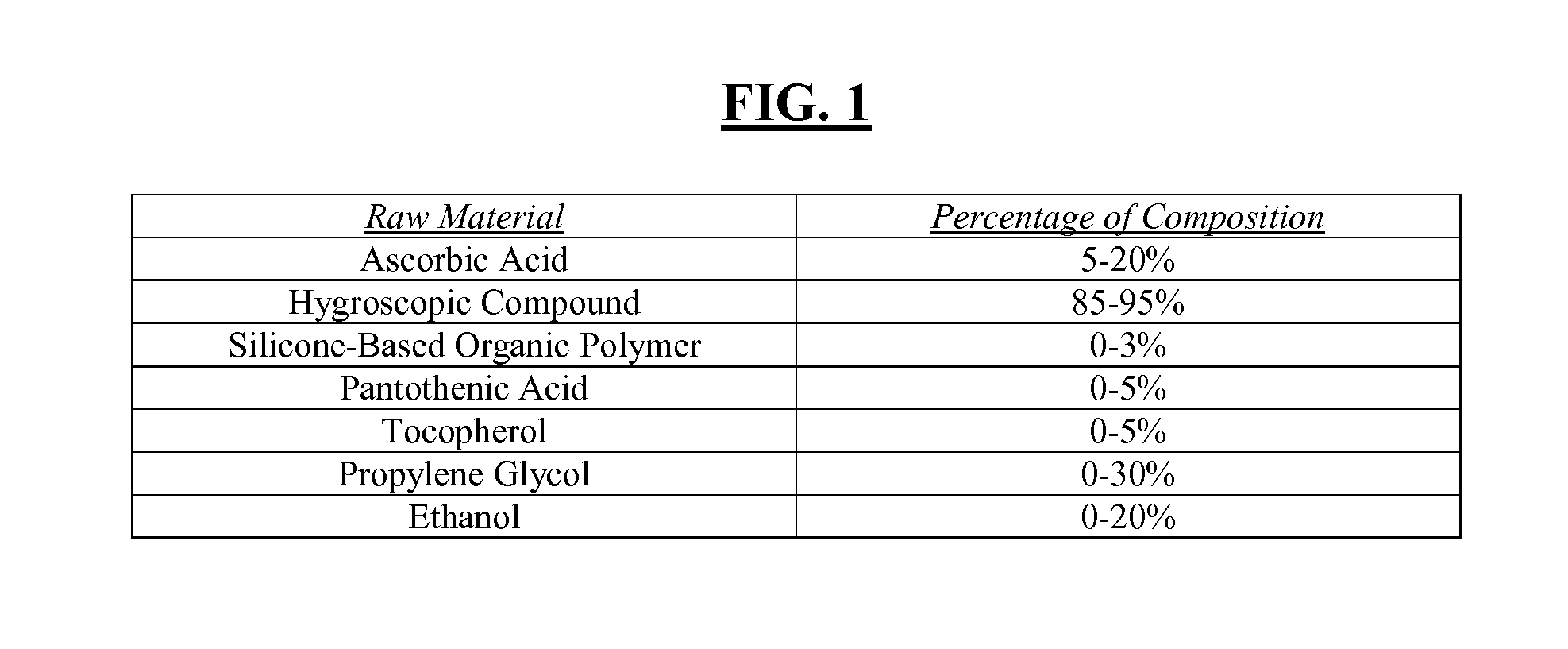Vitamin C Composition for Use in the Prevention and Treatment of Stretch Marks, Radiation Dermatitis, and Other Skin Conditions and Methods of Using the Same
a technology of vitamin c and composition, applied in the field of vitamin c, or ascorbic acid, composition, can solve the problems of difficult to create a stable vitamin c formulation, vitamin c is not stable, and generally has a half life of minutes
- Summary
- Abstract
- Description
- Claims
- Application Information
AI Technical Summary
Benefits of technology
Problems solved by technology
Method used
Image
Examples
Embodiment Construction
)
[0037]This disclosure is intended to teach by way of example and not by way of limitation. The present disclosure focuses on a formulation for a stable ascorbic acid composition. This composition, in a simplified form, is comprised of ascorbic acid in solution with a hygroscopic compound (i.e., a substance with the ability to attract water molecules from the surrounding environment through either absorption or adsorption). Also discussed herein are methods for the production of such compositions, along with various alternative methods of using such compounds in the prevention, inhibition and treatment of striae gravidarum, radiation dermatitis, rhytids, lentigoes, dyschromia, sun-damage induced hyperpigmentation, cellulite, scar reduction and purpura, among other skin diseases.
[0038]In one embodiment of the disclosed ascorbic acid composition in solution, the hygroscopic compound comprises: glycerin, sucrose, sorbitol, dextrose, corn syrup and combinations thereof. However, in no w...
PUM
| Property | Measurement | Unit |
|---|---|---|
| pH | aaaaa | aaaaa |
| temperatures | aaaaa | aaaaa |
| pH | aaaaa | aaaaa |
Abstract
Description
Claims
Application Information
 Login to View More
Login to View More - R&D
- Intellectual Property
- Life Sciences
- Materials
- Tech Scout
- Unparalleled Data Quality
- Higher Quality Content
- 60% Fewer Hallucinations
Browse by: Latest US Patents, China's latest patents, Technical Efficacy Thesaurus, Application Domain, Technology Topic, Popular Technical Reports.
© 2025 PatSnap. All rights reserved.Legal|Privacy policy|Modern Slavery Act Transparency Statement|Sitemap|About US| Contact US: help@patsnap.com

